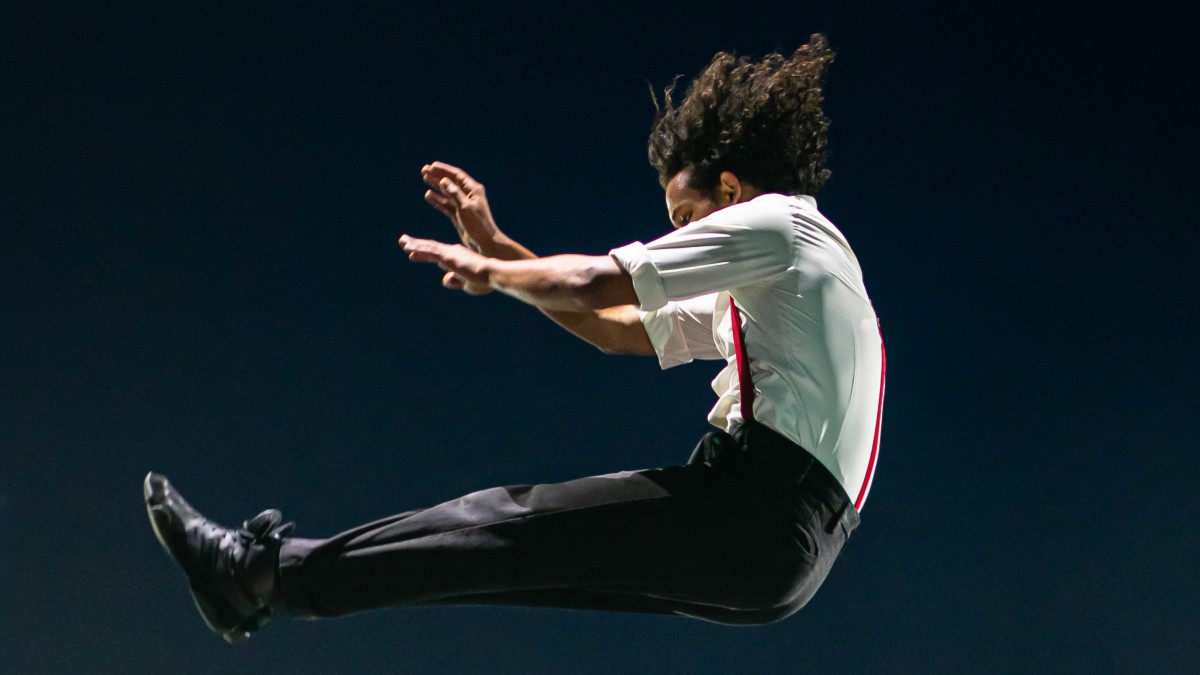
Why 'Hypnogogia' Makes You Feel Like You're Free Falling In Your Sleep
Here's the science behind pre-sleep hallucinations.

By Mark Travers, Ph.D. | January 16, 2024
Have you ever had the jarringly realistic feeling, just before falling asleep, that you're falling through mid-air, leading you to jerk awake? Or perhaps you've felt this falling sensation just before waking up after a night's sleep? If you've felt this before, you are one of many—approximately 70% of the population experiences this phenomenon.
This is referred to as a "hypnic jerk," and it's the result of a broader, more intriguing phenomenon known as "hypnagogia"—the transitional state between sleep and wakefulness, which often entails the experience of strange hallucinations.
For a long time, the causes, mechanics and effects of hypnagogia were relatively understudied, and the phenomenon still leaves psychologists and neurologists mystified. However, progress has revealed new insights on the perplexing features of this hallucinatory state.
What Is Hypnagogia?
Many academics have attempted to unveil the mechanisms of hypnagogia. One study describes hypnagogia as a normal and healthy state of consciousness that all individuals regularly enter between sleep and wakefulness, characterized by simple shifts in cognitive functioning. This transitional state is entered in both sleep onset and offset, as we are about to fall asleep and as we are about to wake up.
These shifts in cognitive functioning between states of wakefulness are understood to result in fleeting perceptual experiences, or "hypnagogic hallucinations," that are spontaneous, involuntary and of varying levels of intensity. According to the study, approximately 85% of these hallucinations are visual, approximately 35% evoke physical, somatic sensations within the body and around 20% are auditory.
Importantly, these hypnagogic hallucinations are not the same as other common sleep-related perceptions. Specifically, hypnagogia is not the same as dreaming, parasomnia or sleep paralysis; hypnagogia is an entirely separate, and normal, form of hallucination.
While the idea that up to 70% of the population spends their mornings or nights casually hallucinating might sound unbelievable, these fleeting perceptions are often common, simple and many don't even realize that they experience it.
What Happens During Hypnagogia?
According to research published in the Journal of Sleep Research, these distinct hallucinations vary in a multitude of ways, from frequency and sensation to precursors and effects:
- Visual hallucinations. This is the most common form of hypnagogic hallucination, and can range in appearance and intensity. These visual perceptions are usually reported as random lines, speckles, forms or images that manifest within the mind's eye. They may range in color (either monochromatic or bright and rich), in stillness (either still or moving) or dimension (either flat or 3D).
- The "Tetris effect." Named after the classic 2D visuospatial arcade game, the Tetris effect refers to perceptions of repetitive activities that are regularly engaged in before sleep. Particularly, many avid Tetris players may visually hallucinate Tetris pieces falling into place during their hypnagogic states. Similarly, like the scenes from Netflix's popular show The Queen's Gambit, many avid chess players may visually hallucinate different positions and strategies. Others might hallucinate of physical, auditory or tactile sensations that are regularly felt in their daily routine.
- Auditory hallucinations. Some hypnagogic hallucinations may be entirely auditory, and some may be auditory in combination with other sensations. Like the visual hallucinations, these may vary in intensity—from faint sounds to loud bangs. People may imagine mundane noises, like alarm clocks and doorbells. Others commonly hallucinate snippets of spoken words, often resulting in "hypnagogic speech," heard by outsiders as garbled sleep talking.
- Other senses. Many people may have hypnagogic hallucinations regarding perceptions of different tastes, smells and temperature. Others might imagine physical changes in or around their body, such as numbness, floating or changes in size. However, the most common hallucination is the previously mentioned hypnic jerk–the feeling of falling.
Who Is Prone To Hypnagogia? And Can It Be Induced?
The aforementioned study highlights that certain individuals are more prone to experiencing hypnagogia, and the phenomenon is closely linked to sleep quality and various clinical conditions. Those with indicators of poor sleep quality as a result of insomnia, PTSD, depression or anxiety are more likely to encounter hypnagogic states. Interestingly, those with strong beliefs in paranormal phenomena were also found by the researchers to be more prone to hypnagogia.
Despite being linked to poor sleep and mood/anxiety disorders, hypnagogia offers a unique and beneficial realm for creative thinking and problem-solving. A study published in the Encyclopedia of Creativity found that hypnagogia, allowing hallucinatory images to be critically examined while still before the eyes, is particularly effective in solving problems.
The research highlights various historical figures, including August Kekulé, Beethoven, Salvador Dalí and Isaac Newton, who have credited hypnagogia as enhancing their creativity. This suggests that the hypnagogic state provides a fertile ground for innovative insights and solutions that may not emerge in other stages of sleep, or even while awake.
According to the study from the Journal of Sleep Research, hypnagogia can be intentionally induced, with hypnosis emerging as a promising approach. The authors explain that the process involves 20-30 minutes of relaxing principal muscle groups, followed by 15-20 minutes of indirect hypnotic suggestion.
This intentional induction of hypnagogia not only adds an intriguing dimension to sleep research, but also presents an opportunity for individuals to explore their creative potential and problem-solving abilities in a controlled and intentional manner. The deliberate induction of hypnagogia could prove to be an interesting, maybe even fun, experiment, as well as a tool to harness the unique benefits this transitional state offers.
Conclusion
In the waning moments between wakefulness and sleep, hypnagogia unveils its mystique: a transitional state rich with strange hallucinations. However, through intentional induction, hypnagogia may become a gateway to enhanced creativity and problem-solving. For those prone to it, or those curious enough to induce it, hypnagogia could be an intriguing avenue to explore the mind's uncharted realms.
A similar version of this article can also be found on Forbes.com, here.
